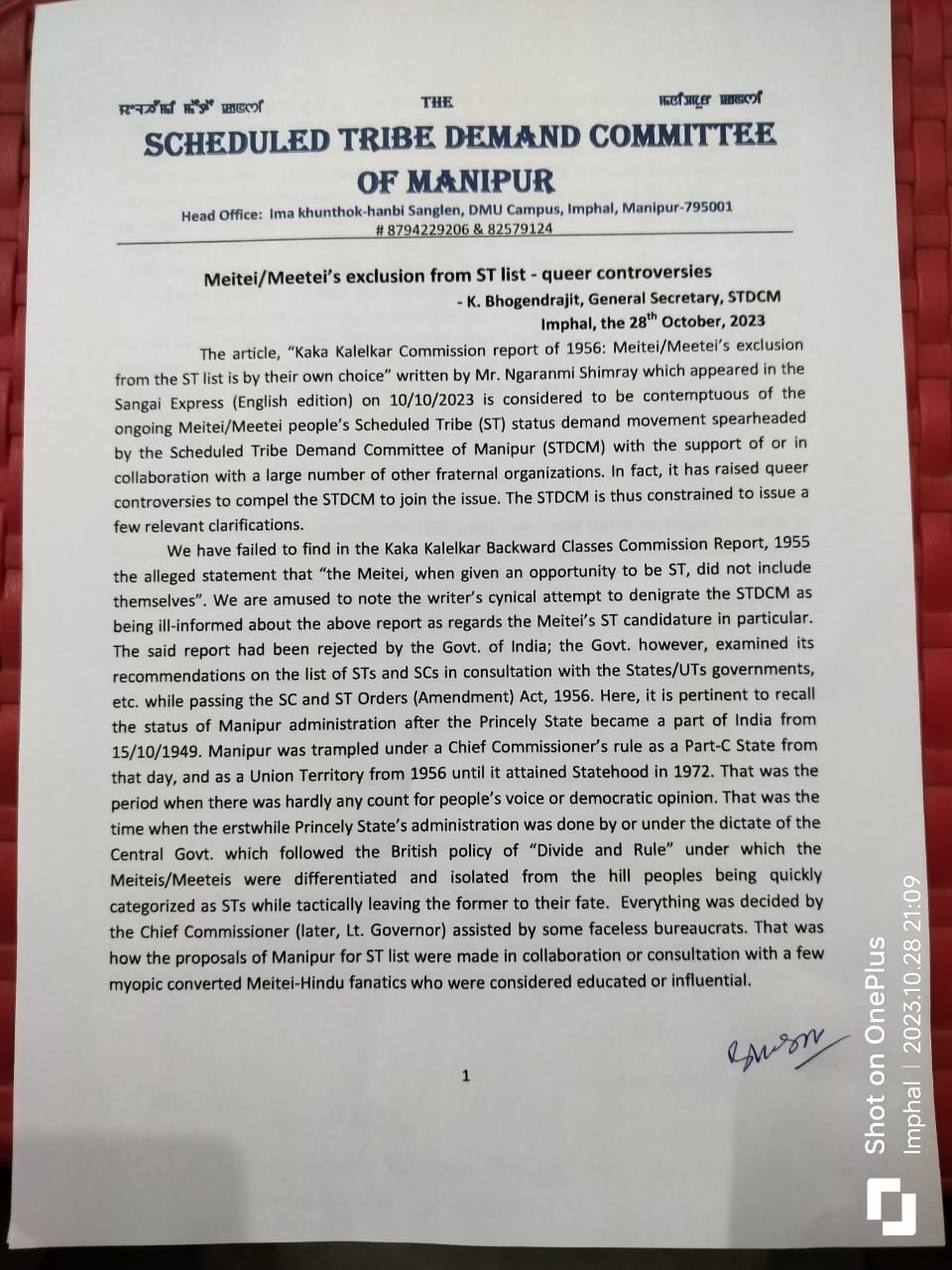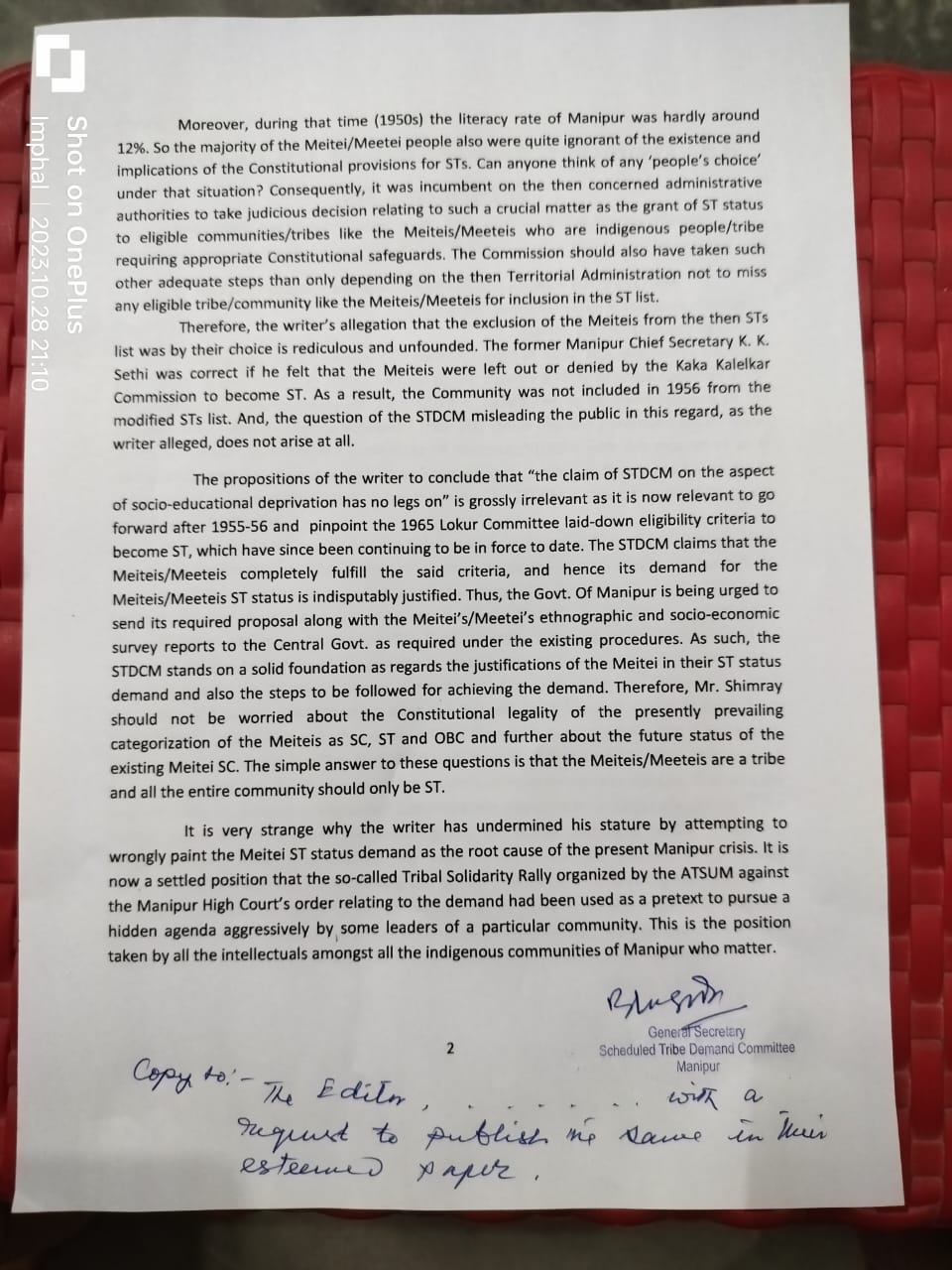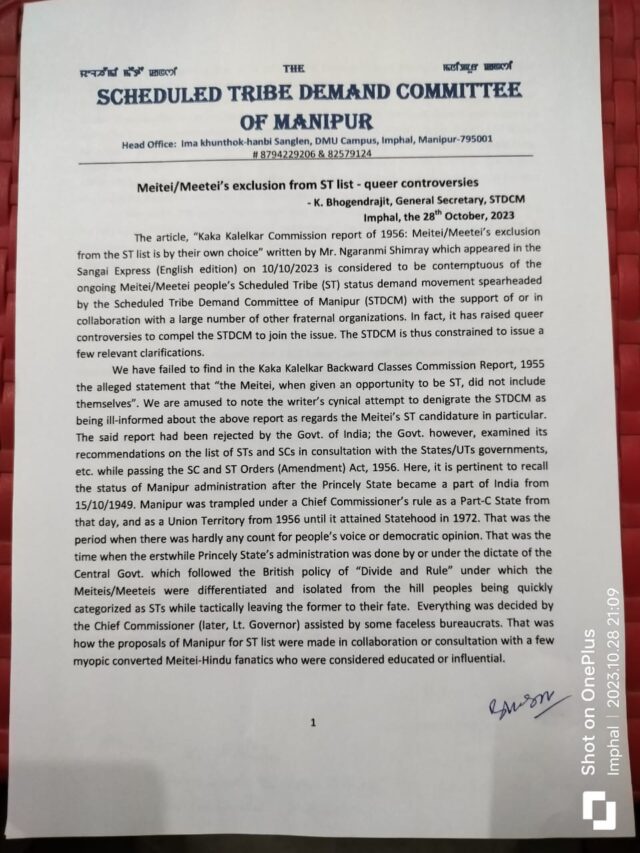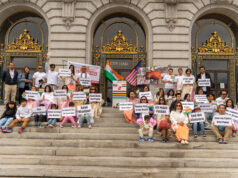By K. Bhogendrajit, General Secretary, STDCM
The article, “Kaka Kalelkar Commission report of 1956: Meitei/Meetei’s exclusion from the ST list is by their own choice” written by Mr. Ngaranmi Shimray which appeared in the Sangai Express (English edition) on 10/10/2023 is considered to be contemptous of the ongoing Meitei/Meetei people’s Scheduled Tribe (ST) status demand movement spearheaded by the Scheduled Tribe Demand Committee of Manipur (STDCM) with the support of or in collaboration with a large number of other fraternal organizations. In fact, it has raised queer controversies to compel the STDCM to join the issue. The STDCM is thus constrained to issue a few relevant clarifications.
We have failed to find in the Kaka Kalelkar Backward Classes Commission Report, 1955 the alleged statement that “the Meitei, when given an opportunity to be ST, did not include themselves”. We are amused to note the writer’s cynical attempt to denigrate the STDCM as being ill-informed about the above report as regards the Meitei’s ST candidature in particular. The said report had been rejected by the Govt. of India; the Govt. however, examined its recommendations on the list of STs and SCs in consultation with the States/UTs governments, etc. while passing the SC and ST Orders (Amendment) Act, 1956. Here, it is pertinent to recall the status of Manipur administration after the Princely State became a part of India from 15/10/1949. Manipur was trampled under a Chief Commissioner’s rule as a Part-C State from that day, and as a Union Territory from 1956 until it attained Statehood in 1972. That was the period when there was hardly any count for people’s voice or democratic opinion. That was the time when the erstwhile Princely State’s administration was done by or under the dictate of the Central Govt. which followed the British policy of “Divide and Rule” under which the Meiteis/Meeteis were differentiated and isolated from the hill peoples being quickly categorized as STs while tactically leaving the former to their fate. Everything was decided by the Chief Commissioner (later, Lt. Governor) assisted by some faceless bureaucrats. That was how the proposals of Manipur for ST list were made in collaboration or consultation with a few myopic converted Meitei-Hindu fanatics who were considered educated or influential.
Moreover, during that time (1950s) the literacy rate of Manipur was hardly around 12%. So the majority of the Meitei/Meetei people also were quite ignorant of the existence and implications of the Constitutional provisions for STs. Can anyone think of any ‘people’s choice’ under that situation? Consequently, it was incumbent on the then concerned administrative authorities to take judicious decision relating to such a crucial matter as the grant of ST status to eligible communities/tribes like the Meiteis/Meeteis who are indigenous people/tribe requiring appropriate Constitutional safeguards. The Commission should also have taken such other adequate steps than only depending on the then Territorial Administration not to miss any eligible tribe/community like the Meiteis/Meeteis for inclusion in the ST list. 

Therefore, the writer’s allegation that the exclusion of the Meiteis from the then STs list was by their choice is rediculous and unfounded. The former Manipur Chief Secretary K. K. Sethi was correct if he felt that the Meiteis were left out or denied by the Kaka Kalelkar Commission to become ST. As a result, the Community was not included in 1956 from the modified STs list. And, the question of the STDCM misleading the public in this regard, as the writer alleged, does not arise at all.
The propositions of the writer to conclude that “the claim of STDCM on the aspect of socio-educational deprivation has no legs on” is grossly irrelevant as it is now relevant to go forward after 1955-56 and pinpoint the 1965 Lokur Committee laid-down eligibility criteria to become ST, which have since been continuing to be in force to date. The STDCM claims that the Meiteis/Meeteis completely fulfill the said criteria, and hence its demand for the Meiteis/Meeteis ST status is indisputably justified. Thus, the Govt. Of Manipur is being urged to send its required proposal along with the Meitei’s/Meetei’s ethnographic and socio-economic survey reports to the Central Govt. as required under the existing procedures. As such, the STDCM stands on a solid foundation as regards the justifications of the Meitei in their ST status demand and also the steps to be followed for achieving the demand. Therefore, Mr. Shimray should not be worried about the Constitutional legality of the presently prevailing categorization of the Meiteis as SC, ST and OBC and further about the future status of the existing Meitei SC. The simple answer to these questions is that the Meiteis/Meeteis are a tribe and all the entire community should only be ST.
It is very strange why the writer has undermined his stature by attempting to wrongly paint the Meitei ST status demand as the root cause of the present Manipur crisis. It is now a settled position that the so-called Tribal Solidarity Rally organized by the ATSUM against the Manipur High Court’s order relating to the demand had been used as a pretext to pursue a hidden agenda aggressively by some leaders of a particular community. This is the position taken by all the intellectuals amongst all the indigenous communities of Manipur who matter.












